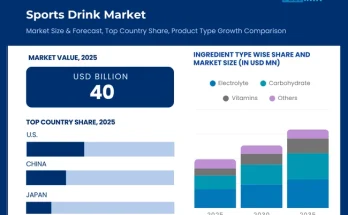Within the past years, there has been tremendous growth in the global seafood market; Tilapia has emerged as one of the highly demanded fish species. Having a mild flavor allowing diverse recipes at an affordable price, it is becoming the backbone of most households and further being preferred by most people seeking good health.
It represents the fourth fish in demand after salmon, tuna, and pangasius. Originating from Africa, it is now farmed in over 135 countries with the largest producer being China. Increased demand for cheap sources of protein, expansion in aquaculture, and the raised awareness of health benefits from fish consumption have hugely increased the global Tilapia market.
Factors that Drive the Tilapia Market Growth
Growth of the market has been fueled mainly by improved aquaculture technology, better farming practices, and increasing demand from consumers wanting healthier and more sustainable food.
- There has been a high demand for low-cost protein in the last few years. Because of the rising global population, demand for low-cost protein has also increased and tilapia fits as a low-cost source with high protein content. With consumers highly becoming conscious of health and proper eating, Tilapia mirrors this to a T. Rich in protein, low in fat, and loaded with essential nutrients such as omega-3 fatty acids, vitamins, and minerals, as people grow more concerned about health, demand for Tilapia keeps on rising.
- Tilapia has been recognized as a very inexpensive source of protein. Thus, it is readily accepted as food in many countries with lower average incomes. Compared to other fish, like salmon or tuna, it is cheap and thus forms a natural staple of many diets and is integral in developing nations.
Besides this, the growing aquaculture sector has been the most powerful driver of higher global seafood supply. Tilapias are relatively easy to farm and can be raised in both fresh and brackish water, in a wide range of environments. Most global production now comes from China, Egypt, Indonesia, and Brazil.
Our research estimates a current tilapia industry valuation of US$ 14.1 billion & projects the demand rise at 4.6% CAGR.
The sustainability of Tilapia farming is yet another aspect favoring this market growth. Tilapia farming, considering other forms of aquaculture, represents minimal environmental degradation. With a good feed conversion rate, low input, and potential for using alternative feed ingredients, it is preferred for sustainable fish farming.
Challenges Faced by the Tilapia Industry
It was reported that in tilapia culture, there have been recurring outbreaks of diseases such as Streptococcus and other types of bacterial infection, causing high mortality rates and directly affecting production levels and prices at the market. Effective control of disease and biosecurity measures are, therefore, aimed at stabilizing production.
Tilapia, though popular in demand, still faces stiff competition from other aquaculture species, with Pangasius and catfish being some of its closest rivals. Moreover, there is competition from wild-caught seafood against farmed Tilapia in several markets where consumers prefer consuming wild rather than farmed fish.
Tilapia enjoyed its demand, but the negative publicity never left it alone in the form of concerns over its nutritional makeup and, more importantly, its omega-6 to omega-3 ratio. There have been issues with regards to perception about farming practices too, principally relating to countries that have low environmental and food safety standards.
International trade stipulations and tariffs dampen export opportunities for large producers in the global Tilapia market. Changes in trade policies, especially of the key markets of the United States and Europe, will resound in the market dynamic.
Market Growth Opportunities for Tilapia Product Manufacturers
- Product diversification is immense within the Tilapia market. Along with fresh and frozen fillets, several value-added products can be created, such as ready-to-cook meals, smoked Tilapia, and Tilapia-based snacks. These products match the changing consumer needs for convenience and innovation.
- Because of the growing global demand for seafood, new markets are opening up in the Middle East, Africa, and Latin America. It may just be the case that a better presence for Tilapia in these new markets will suffice for high growth—especially when supported by strategic marketing efforts and trade agreements.
Obtain Comprehensive Data on the Growing Tilapia Market Sector
- Businesses should invest in sustainable aquaculture practices and obtain certification under the Aquaculture Stewardship Council (ASC) or GlobalGAP to make Tilapia more marketable. These days, when consumers are looking for seafood that is responsibly sourced, gaining certifications will help to also win over the fast-growing niche market.
- Implementing advanced technologies in farming Tilapia, such as mechanical feeding, monitoring of water quality, and genetics research, raises productivity while lowering production costs. Improved feeding methods that emphasize alternate protein sources in feed formulation will also be important for the long-term sustainability of farming Tilapia.
Future Opportunities in the Global Tilapia Market
The global tilapia market is still very promising, as fish is a good source of protein that is quite affordable and sustainable.
Despite the problems with diseases and other market challenges, opportunities for growth in the tilapia segment are quite high in terms of diversifying products and markets and further establishing sustainability practices. With an increasingly aquatic future for seafood supply, Tilapia remains exceptionally well-positioned to remain at the heart of the global marketplace.



